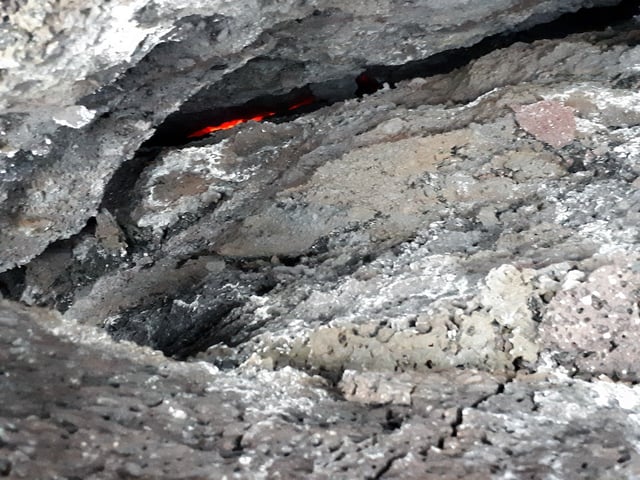I have experienced a similar situation two years ago. I visited the site of the 2021 Fagradalsfjall eruption on November 18, 2021, exactly two months after the last emission of lava (and one month before the Icelandic Met Office declared the eruption officially over on December 18). We walked on top of the solidified crust of the lava pond to reach the main vent (don't do it, see below). There were some fissures in the crust, like this one, about 20 cm wide:

And if you looked inside the fissure, you could actually see some red glowing lava at the bottom, maybe 3 meters deep:

Nothing impressive, and maybe not what you had in mind, but it definitely qualifies as "red hot lava", two months after the magma supply had ended. That being said, here are some thoughts about your trip plans:
The eruption may be over, but the area is still closed for the time being. Here is the current hazard map, valid until December 29 (check for updates to see how the situation evolve). 
Compared to other countries, Icelanders usually have very relaxed
rules regarding access to eruption sites (the freedom to access
private lands is a cultural thing called almannaréttur and is even
written in law). So if the access is forbidden, it means Iceland
authorities have very good reasons to do it.
Indeed, there is still ground inflation measured in the area, below the Svartsengi geothermal plant. It means that magma accumulation has resumed and another eruption is already on its way, although it could take weeks or months. It could be during your stay if you're lucky—and if access is allowed...
In any case, if you do manage to reach the last eruption site, don't walk on the lava flow crust in the hope to see some active lava. I did it with a group of visiting volcanologists, guided by local volcanologists who had been in the field every day for six months. They knew the site very well and we just followed their tracks. It can remain dangerous for months. I hope that you'll get to see this wonder of nature, but don't risk your life for it!


